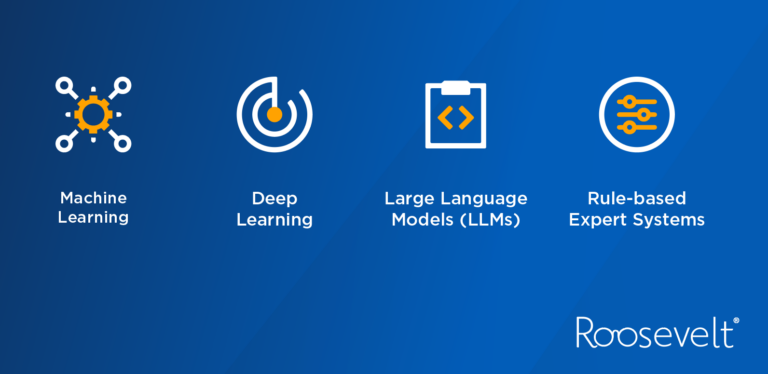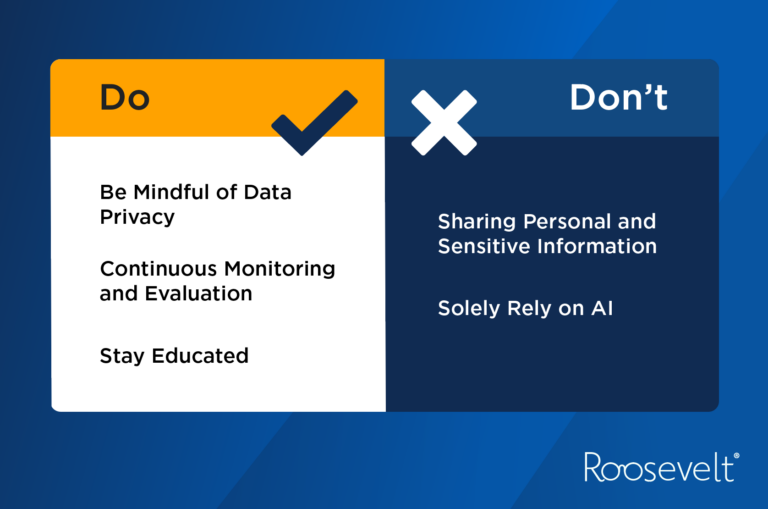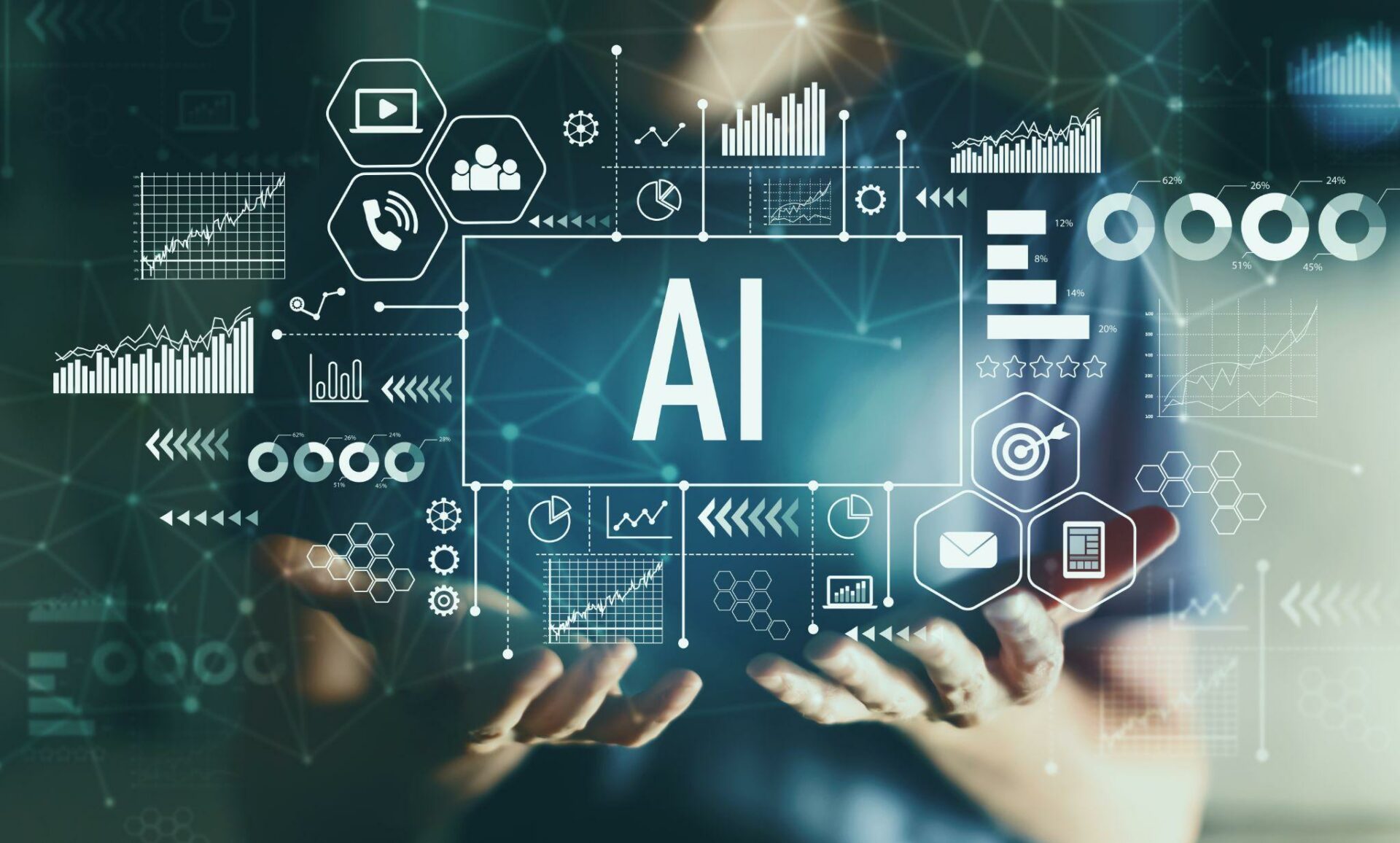Artificial Intelligence (AI) is currently one of the most talked-about terms in the technology world, but what does AI really mean, and how can it be used to impact decision-making while ensuring data protection?
This blog post explores popular concepts and trends in AI, its current and future state, benefits and challenges of AI-driven decision-making, the importance of protecting data, and best practices for using AI ethically responsibly.
What is AI and How Does It Work?
AI is a broad term that refers to the ability of machines to perform tasks that normally require human intelligence, such as reasoning, learning, problem-solving, and creativity. AI is not a single technology, but rather a collection of methods and techniques that can be applied to different domains and problems. AI encompasses various widely used methods and techniques, including machine learning, deep learning, generative AI, and Large Language Models (LLM). These approaches empower computers to process and understand spoken and written language, interpret data, offer recommendations, and perform other tasks. Each is defined below:
- Machine Learning: A branch of AI that trains machines to learn from data and improve their performance without explicit programming, using unsupervised and supervised learning methods.
- Deep Learning: A machine learning technique that uses layers of neural networks to process data and make decisions. Neural networks are inspired by the structure and function of the human brain and can learn from complex and unstructured data, such as images, text, or speech.
- Large Language Models (LLMs): A type of generative AI that can produce natural language texts, given certain inputs or requests. LLMs are trained on large amounts of text data and can learn the patterns, rules, and structures of natural language. They can be used for tasks such as text summarization, translation, or generation.
- Rule-based Expert Systems: A system, like Roosevelt’s BRIDE rules engine, uses AI inference to emulate human logical reasoning when through numerous human expert-defined business rules processing data patterns such as claims, patient history, eligibility, and clinical procedures. These systems are often referred to as expert systems that apply knowledge from human experience. However, Roosevelt’s BRIDE rules engine does not make clinical decisions, ensuring that all clinical judgments remain with qualified healthcare professionals.

One may think of AI as a smart child with a photographic memory. Initially, AI knows nothing and needs to be taught from the ground up. For instance, if you ask a brand-new AI to describe a tooth, it wouldn’t have any idea what you’re talking about. You would need to upload a description of a tooth for it to understand. Once it knows that description, it can repeat it when others ask. However, if you ask it to describe a molar, it wouldn’t be able to, even though a molar is a type of tooth.
As AI learns and accumulates knowledge, it can enable organizations to automate or augment their business processes by analyzing data and providing insights, suggestions, or solutions. For example, AI could help predict the likelihood of a claim being denied, based on the features and patterns of the data, thereby assisting insurers in determining what claims to route to dental clinicians for review. It’s important to note that using AI in this manner is not meant as a replacement for subjective determinations but rather as a tool to enhance decision-making.
AI-Driven Decision Making
AI can enable faster and smarter decision-making, by analyzing data and providing insights, suggestions, or solutions. For instance, AI can automate sorting large volumes of claims data, identifying patterns, and validating information, significantly reducing time and effort compared to manual efforts. Additionally, AI algorithms can support human decision-making by analyzing historical claims data to assist an underwriter in setting premium rates and ensuring optimized pricing based on factors such as claim frequency, demographics, and regional trends.
However, AI-driven decision-making also has drawbacks, such as the lack of human oversight, context, and accountability. At times, AI decisions can be wrong, inappropriate, or biased, because the machine does not have all the information, understanding, or ethics a human would have. It is important to have a human in the loop, who can review, refine, and correct the AI decisions before they are enacted or executed. It may be better to say “AI-supported” decision-making to drive home the point that AI should not be making critical decisions on its own.
“AI is a technology that can help us achieve more, but it is not a replacement for human intelligence, creativity, or judgment. We need to use AI with care and caution, and always keep a human in the loop.” – Mukundan Agaram, Vice President of Knowledge and Data Science
AI and Data Security
Data is the fuel that powers AI, and when using any form of AI, it’s crucial to be vigilant about the data it interacts with and to protect it from unauthorized access, leaks, or misuse. This is especially important when dealing with sensitive, confidential, or proprietary information such as personal health records, company policies, or customer data.
AI functions effectively because companies like OpenAI have uploaded hundreds, thousands, or even millions of examples of something, so the AI has a comprehensive understanding of what you’re talking about due to its exposure to similar data. This is where the concept of “photographic memory” comes into play.
Imagine someone accidentally uploading a description that included personal information: “Rosie Roosevelt has a broken molar. Their SSN is 123-45-6789 on claim #12345.” That description becomes part of the AI’s training. Later, if someone asks the AI to describe a molar, it might respond, “Sure! A molar is a type of tooth. Rosie Roosevelt recently had a claim on a molar that was #12345, and their SSN is 123-45-6789 for reference.” This cycle demonstrates that any AI could reveal all the information it has acquired. As more AI systems are developed, the threat of such occurrences grows.
Below are some suggested best practices for using AI:

- Be Mindful of Data Privacy: Always ensure that the data used by AI systems is handled with the utmost care. This includes implementing encryption methods and access controls and ensuring compliance with relevant data protection regulations such as HIPAA. Regular audits and monitoring can help detect and prevent unauthorized access or data breaches. Understand how to disable models from learning from the data you provide.
- Avoid Sharing Personal and Sensitive Information: When developing or using AI systems, avoid including personally identifiable information (PII) or other sensitive data unless necessary. Ensure that any data sharing with third parties is done securely and complies with privacy laws. Ideally, when using sensitive data, do so in closed models where the data remains in your tannate.
- Don’t Solely Rely on AI: While AI can provide valuable insights and automation, it is crucial to include human oversight in the decision-making process. AI systems can sometimes “hallucinate”, causing errors or generating biased results. It’s great to use AI, but always double-check what it outputs and make sure it is accurate. Having a human in the loop ensures that decisions are reviewed, validated, and adjusted as necessary, maintaining accountability, regulatory compliance, and ethical standards.
- Continuous Monitoring and Evaluation: Regularly monitor and evaluate the performance of AI systems to ensure they are functioning as expected and producing accurate results. This includes updating models with new data, refining algorithms, and addressing any issues that arise. Continuous improvement helps maintain the reliability and relevance of AI applications.
- Stay Educated: The field of AI is rapidly evolving, with new developments and techniques emerging often. Staying informed about the latest advancements, best practices, and ethical considerations is essential for anyone working with AI.
What’s Next
AI is advancing rapidly, and while it is powerful and exciting, it needs to be used thoughtfully. AI has the potential to transform the way we do business, improving efficiency and driving innovation. However, it’s equally important to consider ethics, data protection, and human judgment. By prioritizing these values, we can ensure that AI remains a beneficial tool that enhances our abilities without compromising our principles.


